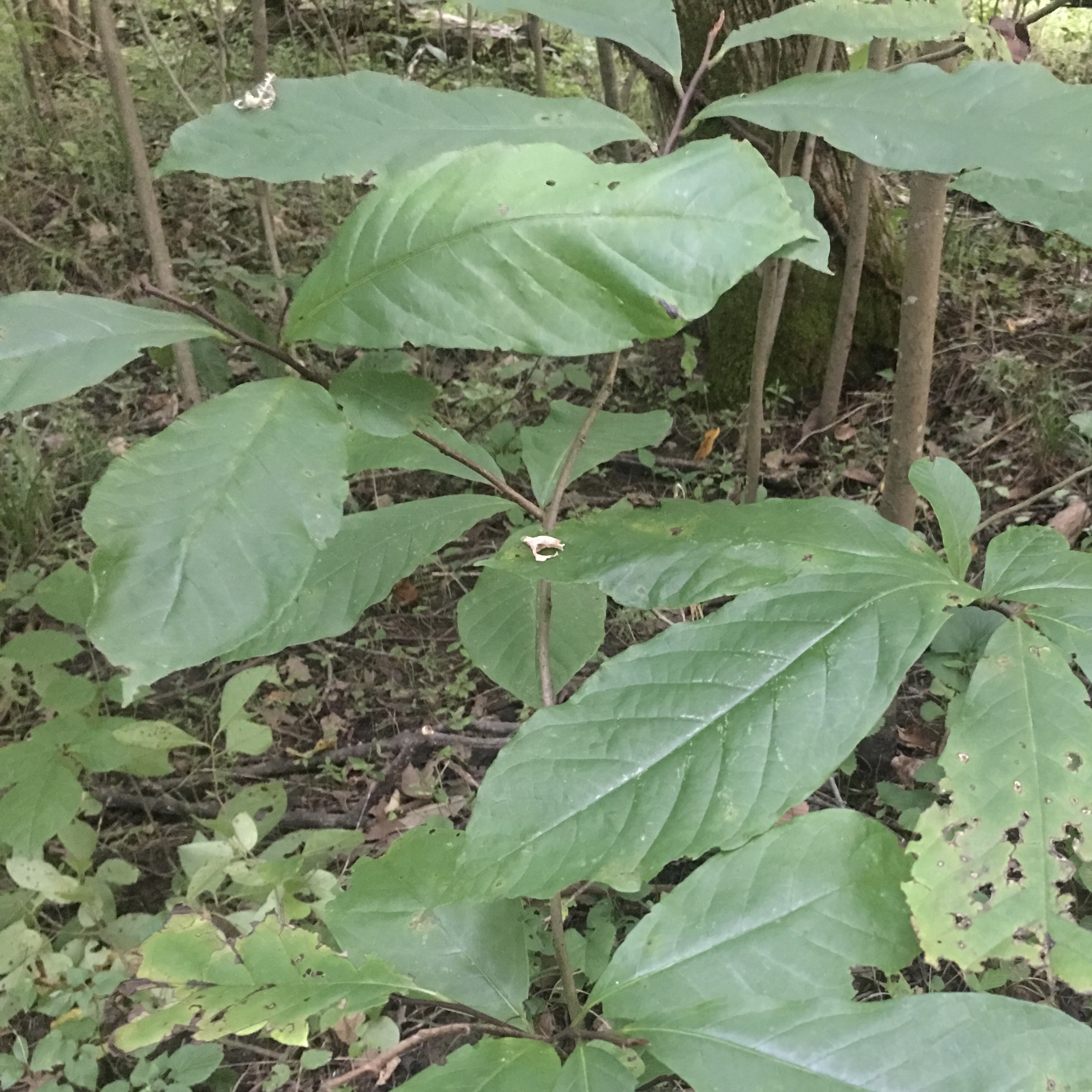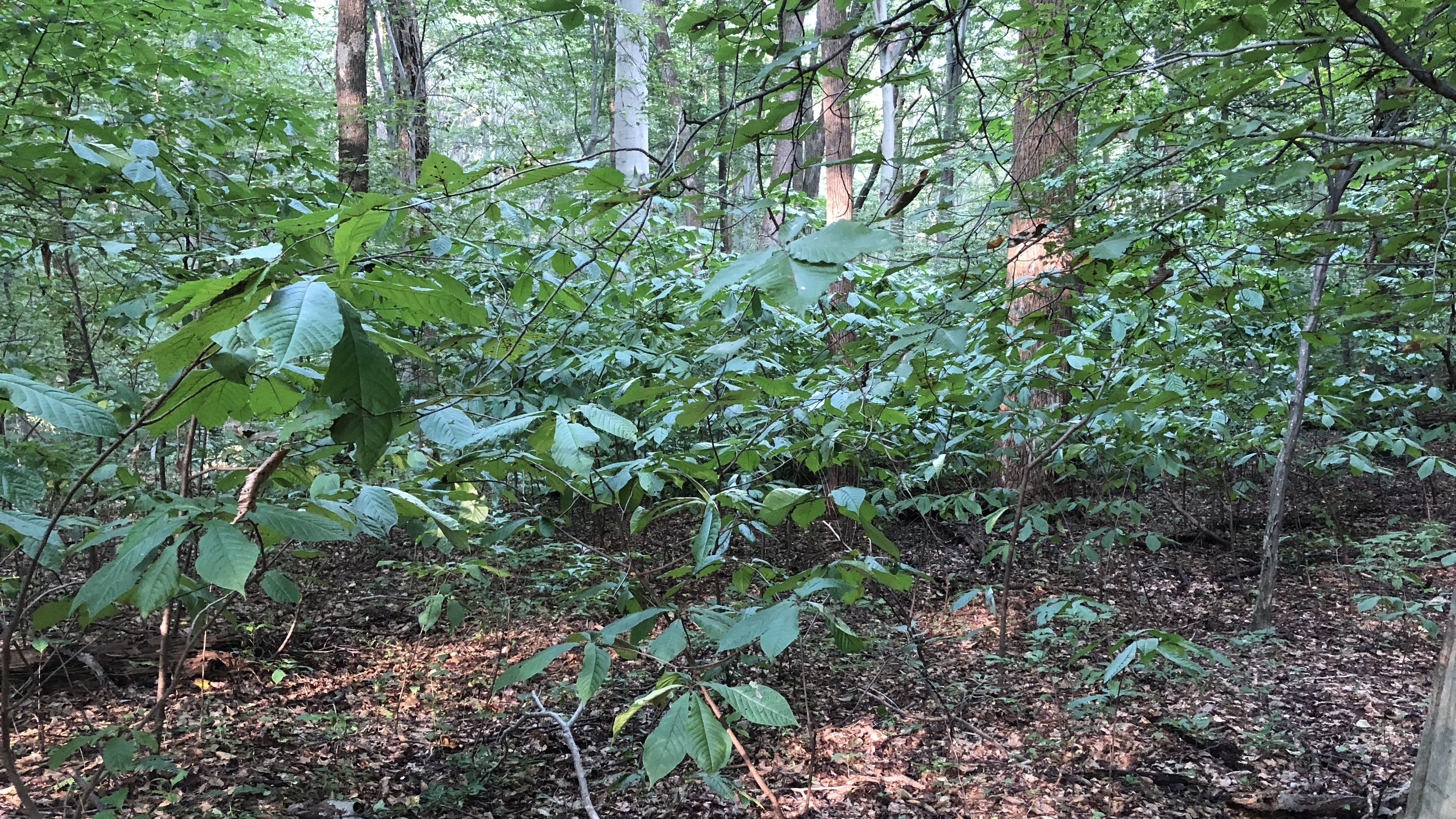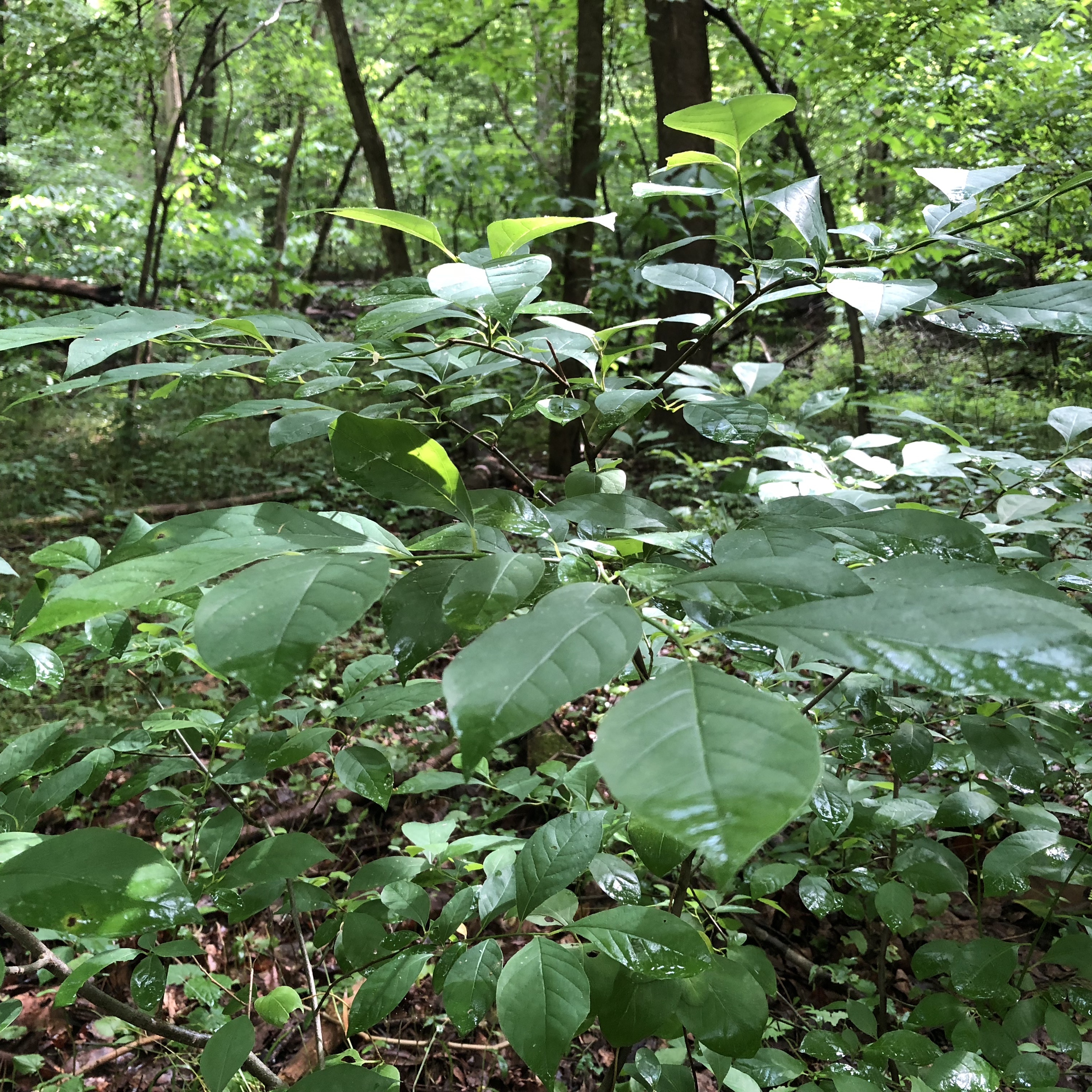Asimina triloba or better known as the Paw Paw tree is native to the eastern United States. It's very abundant in the parks around the Potomac River. It usually grows between 15 - 30 feet tall. In forests with lots of large old mature trees, it can occupy a considerable amount of the understory, and usually it remains on the smaller side of it's mature height. Along the river and some trails, where it can get more light, it seems to reach it's full mature height of about 30 feet.
Paw Paw Fruit
Believe it or not, the Paw Paw is the largest edible fruit native to North America. When ripe, it has a light peach colored flesh, and it tastes like a combination of a banana, mango, and or peach, with a hint of citrus. It has lots of large seeds and tends to be rather fibrous like a some mangos. If you every are walking along a local trail in September or October, and smell a sweet sometimes rottingly sweet smell, it's probably Paw Paw. Look around and see if you can find any of them on the ground. The fruit are eaten by most of our forest friends, but they are edible for people too.
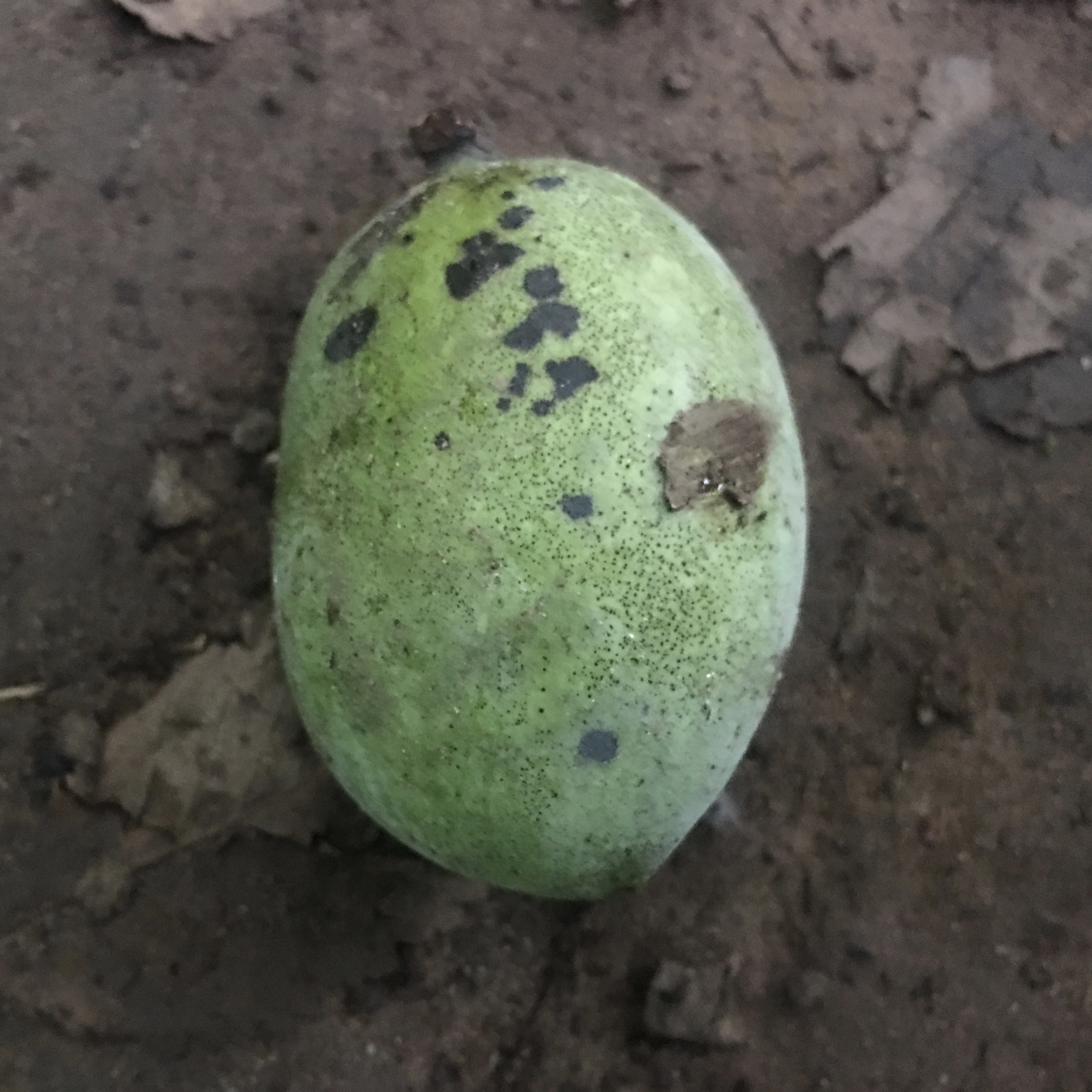
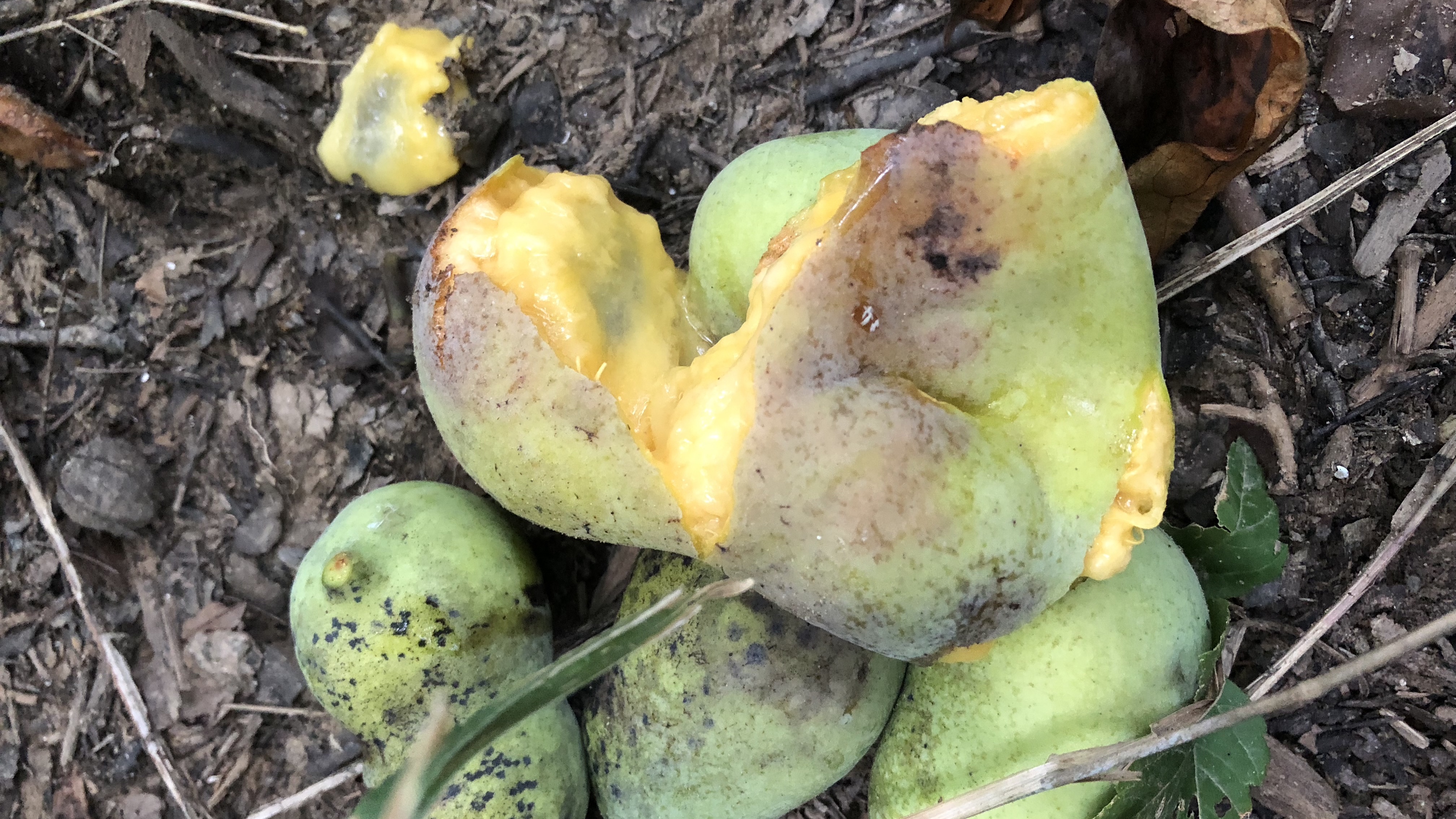
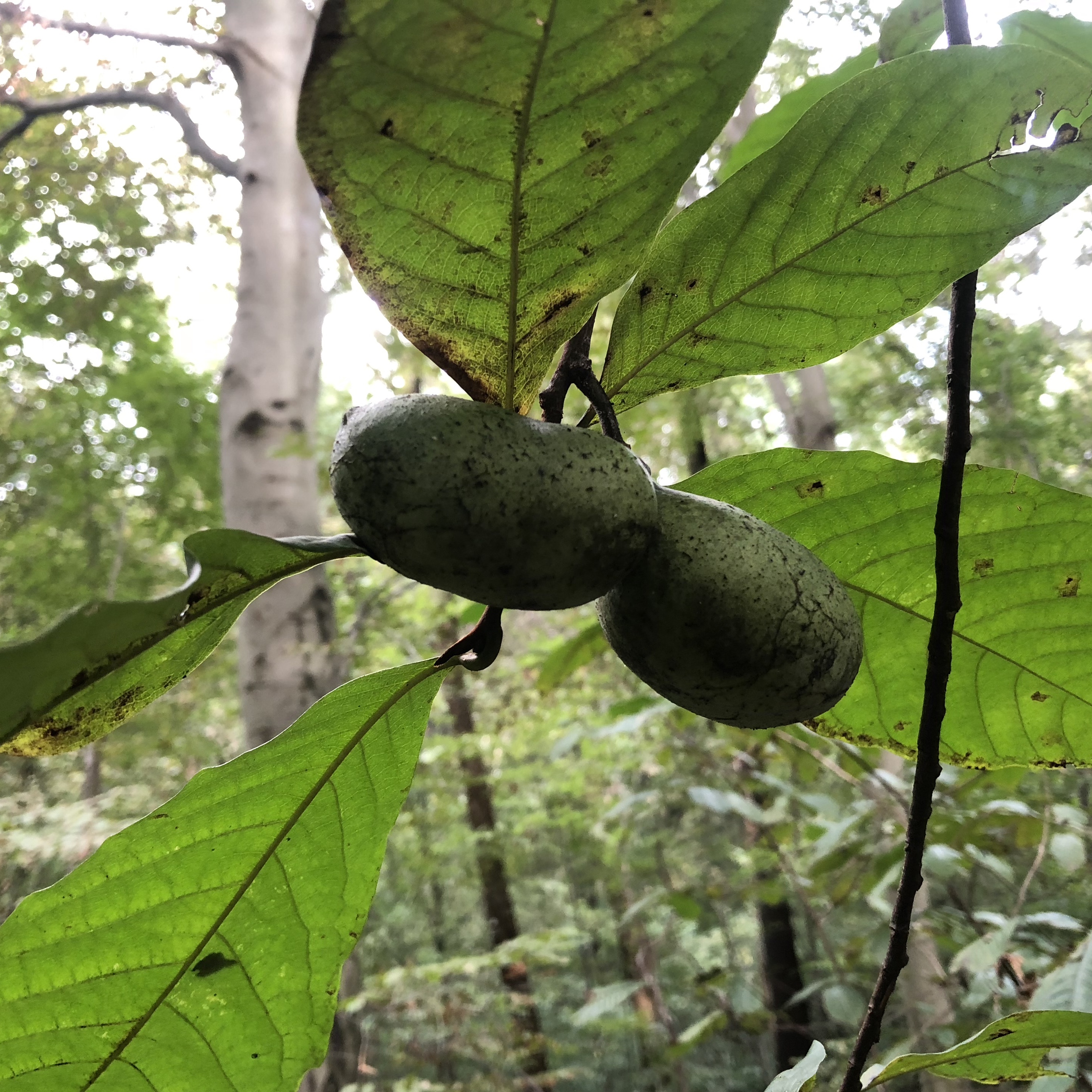
Fruit Growing Patterns
Paw Paw fruit grow in small clusters of 2-3 fruit on the underside of the branch, which makes then a little hard to find. They cannot self pollinate. They have to be pollinated by pollen from a genetically different tree. That's why you may see clusters of Paw Paw trees without fruit. Paw Paws are pollinated by the wind and insects.
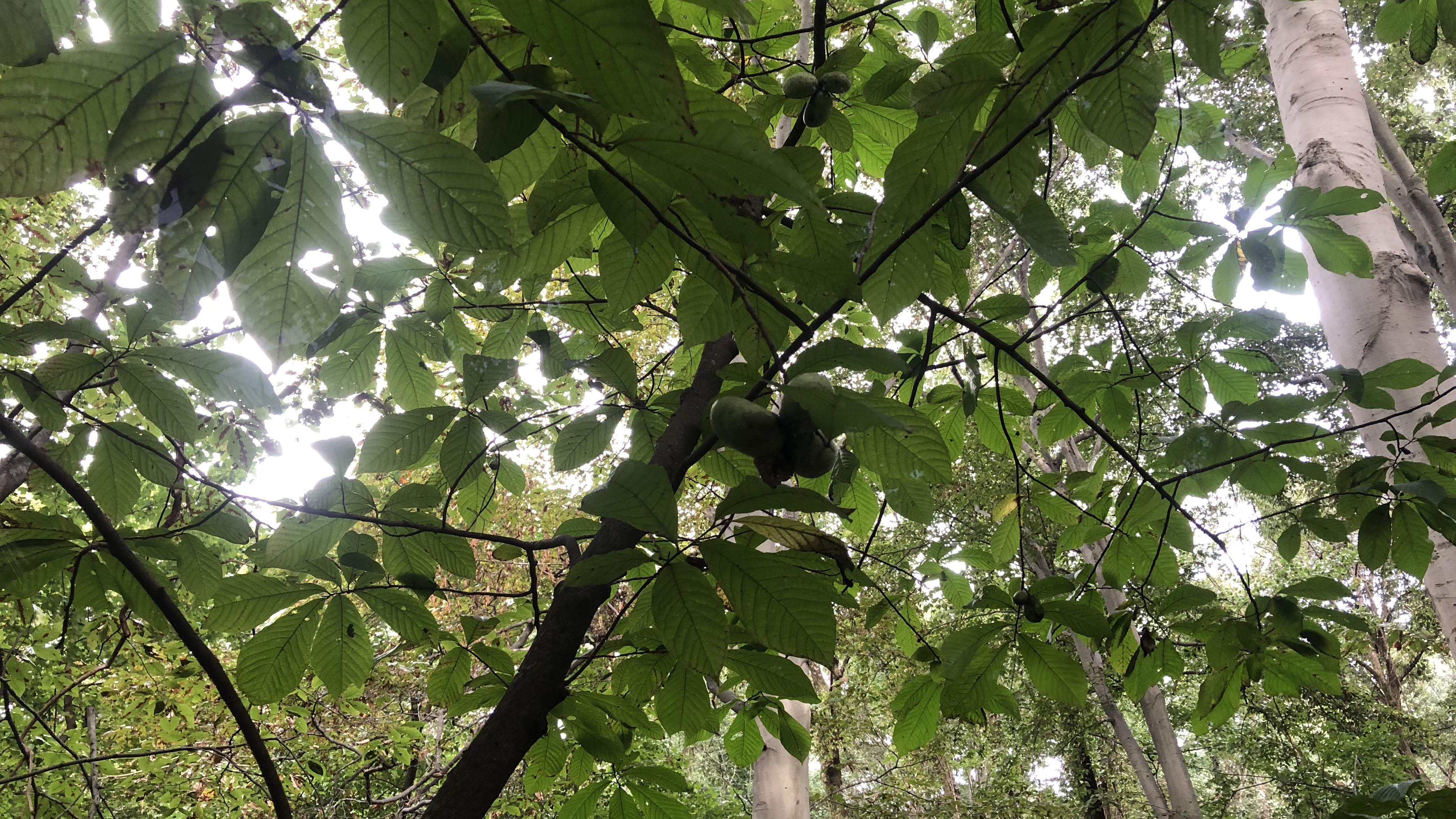
Is Paw Paw Good for the Forest?
Paw Paw trees provide lots of cover in the understory for a variety of animals and that's a good thing. Unfortunately deer don't like to eat them, so they aren't periodically eaten back and have to recover. This gives them an advantage over other types of sampling which deer do eat and may have to recover from deer foraging. Only time will tell if other native trees can prevail and break through thick groves of low growing Paw Paw trees.
